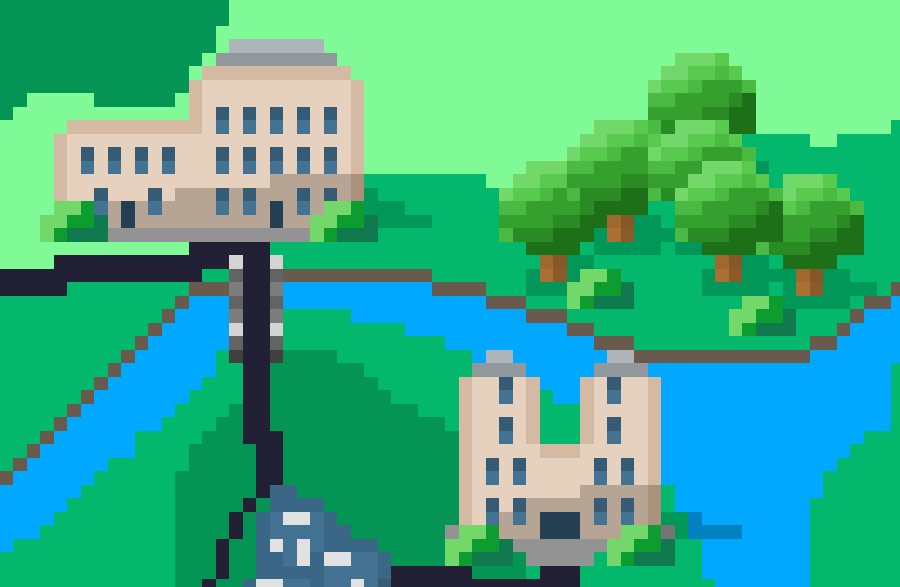SECRET
DigiMastered Works LLC
Office of Development
DMW107IB7001
Date 07/21/2021 09:24PM
To: The People
From: Tanner Fry
Subject: Intro to The Greatest Cold War
About
Development on AIA began early in 2021 with the desire to figure out a good baseline regarding art, the core theme and setting, game mechanics, and more. While art is arguably the most pivotal part, the decision to use pixel-art has come to a close. Through countless hours of research, months of design, and dozens of creations, I've come to a conclusion that pixel-art brings together the best market, skill set, and aesthetics to AIA.
Optimal Market
What do I mean by best market? Well, it pertains to what is already out there and what is not. Gaming is only becoming more diverse and saturated with each passing day. While researching, playing games in my spare time, and failing to create my own games, I have seen how little the gaming industry utilizes pixel-art. Of course it is preference but if given enough time, many games bring about great pixel-art to make them come to life. Examples include Celeste, Dead Cells, Stardew Valley, and Terraria.
However, there are a lot of genres that are lacking. Some that I would consider are RTS (Real-Time Strategy), isometric, and top-down while simulation, 2D-platformers, and rogue-like games are saturated. I think you can argue that top-down pixel-art games are in abundance just as 2D-platformers. Due to the relative ease of creating the art on a flat surface versus applying proper shading and time in order to create realistic 3D pixel-art in a 2D space, these referenced genres are quite populated. RTS and isometric pixel-art games require a more thorough and spacial approach in order to accomplish the same goals and requirements of getting your information across to the end-user. Through this it is my understanding as to why RTS and isometric pixel-art games are rare and in need of more developers.
So, that is the plan. To use the skills I have acquired over the past 4 years, creating pixel-art at random, to make a 2D top-down/RTS/Simulation game. But wait, did you not just say that the simulation genre is saturated? I sure did and I am a firm believer in building something you love while filling a hole that would allow for exposure and creativity.
Skill Set

A bare-bones concept map.
Looking at the map, there are some areas indicating farms, cities, beaches, rivers, buildings and more that can define scenes or areas of focus for the game. By creating this map I became more self-aware of what I wanted from AIA and what it could become. At the moment I am honing my shading skills, creating a more 3D approach to my 2D pixel-art, and figuring out how I can possibly apply isometric pixel-art, like in Pathway, to give a better palette and flavor to the game. Although I'd like to add a more isometric approach, this might be too much of a learning curve while creating the content and design of AIA.

Concept art of buildings surrounded by foliage.
Unfortunately, after adding some shading to my building they still seem flat. This is mostly due to the hard edges as well as the bottom hard edge being the sore thumb of the structures. This could be mitigated by applying an isometric style but I am wondering whether to keep a 2D approach on the overview map while applying an isometric approach to the different scenes later in the game.
Not much has been said about the gameplay, and for good reason, but applying a 2D approach to an overview map allows me to continue to improve my pixel-art skills while creating the general feel of the game. Look forward to future dev blogs talking about RTS features and mechanics implemented into the overview map.
Roadmap
Milestones To Do:
Milestones Completed:
SECRET
Approved for release: 07/21/2021 ID: IB7001
1